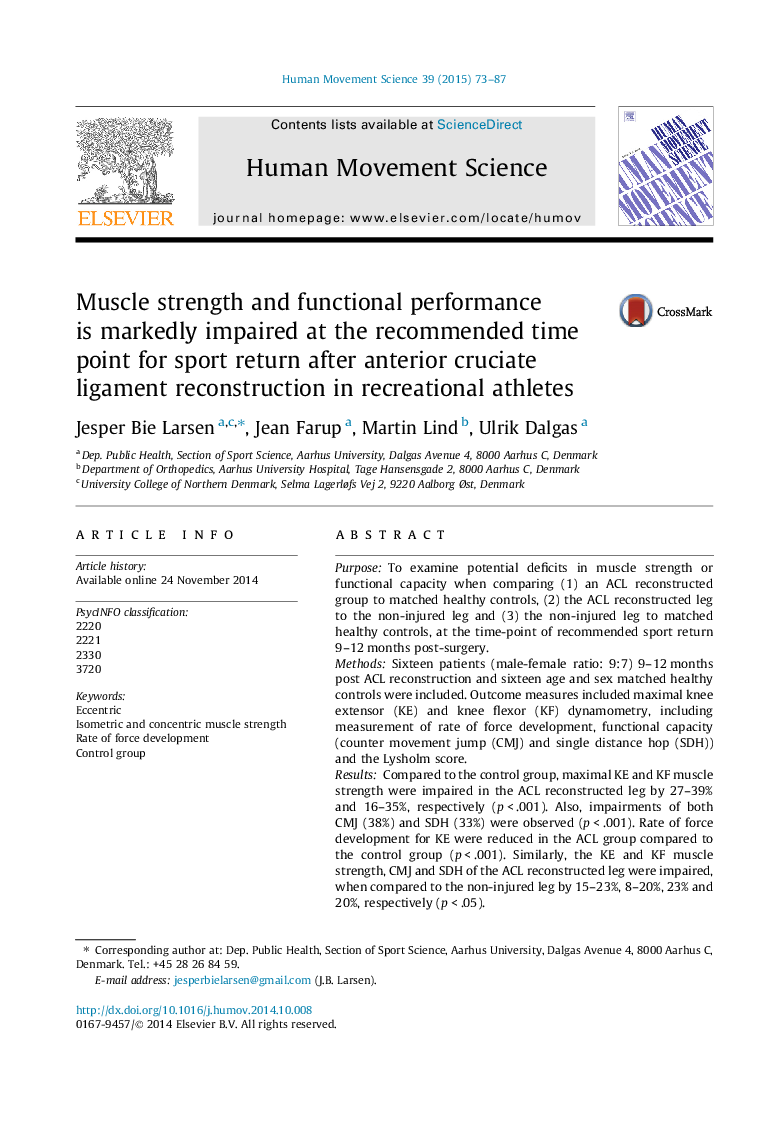| Article ID | Journal | Published Year | Pages | File Type |
|---|---|---|---|---|
| 928290 | Human Movement Science | 2015 | 15 Pages |
•Marked deficits were observed in muscle strength, RFD, functional capacity and Lysholm.•ACL reconstructed patients may not be ready to resume sports at recommended time-point.•Using the non-injured leg as control seems to underestimate the deficits.•Objective measurements should be used rather than the “time since surgery” criteria.•Future rehabilitation programs should include exercises targeting RFD.
PurposeTo examine potential deficits in muscle strength or functional capacity when comparing (1) an ACL reconstructed group to matched healthy controls, (2) the ACL reconstructed leg to the non-injured leg and (3) the non-injured leg to matched healthy controls, at the time-point of recommended sport return 9–12 months post-surgery.MethodsSixteen patients (male-female ratio: 9:7) 9–12 months post ACL reconstruction and sixteen age and sex matched healthy controls were included. Outcome measures included maximal knee extensor (KE) and knee flexor (KF) dynamometry, including measurement of rate of force development, functional capacity (counter movement jump (CMJ) and single distance hop (SDH)) and the Lysholm score.ResultsCompared to the control group, maximal KE and KF muscle strength were impaired in the ACL reconstructed leg by 27–39% and 16–35%, respectively (p < .001). Also, impairments of both CMJ (38%) and SDH (33%) were observed (p < .001). Rate of force development for KE were reduced in the ACL group compared to the control group (p < .001). Similarly, the KE and KF muscle strength, CMJ and SDH of the ACL reconstructed leg were impaired, when compared to the non-injured leg by 15–23%, 8–20%, 23% and 20%, respectively (p < .05).ConclusionMuscle strength and functional capacity are markedly impaired in the ACL reconstructed leg of recreationally active people 9–12 months post-surgery when compared to healthy matched controls and to their non-injured leg. This suggests that objective criteria rather than “time-since-surgery” criteria should guide return to sport.
